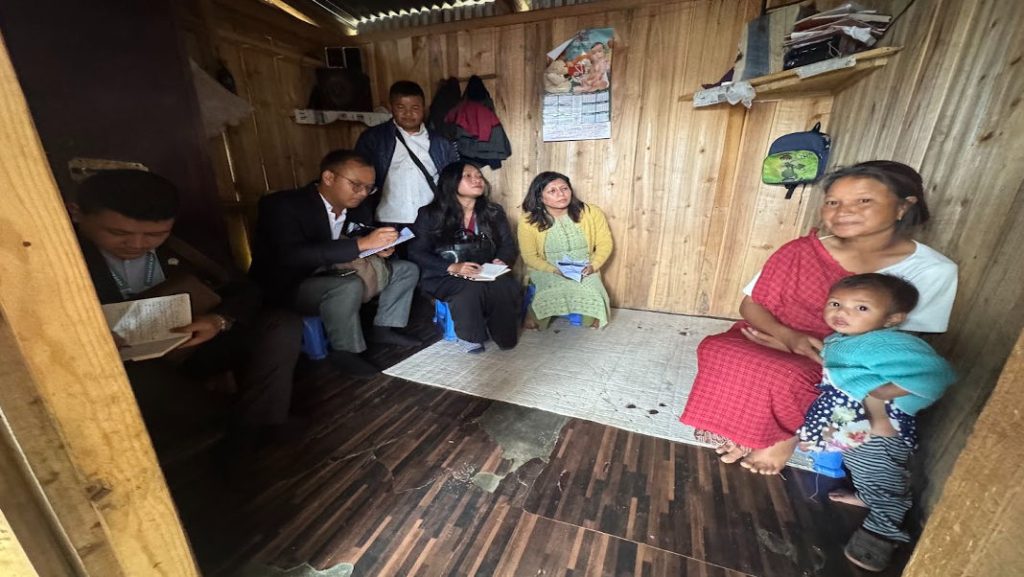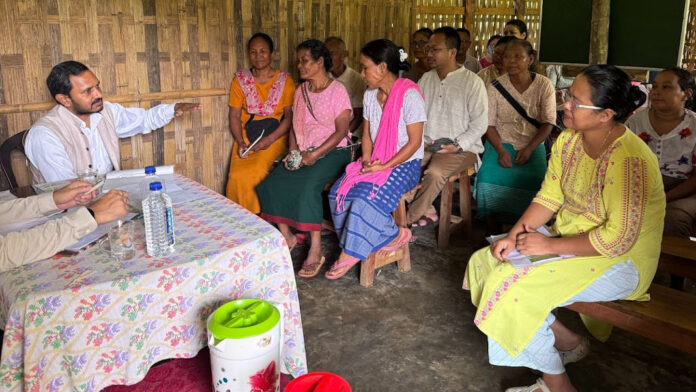Multi-department teams visit over 6,800 villages to map vulnerabilities, restore access to rights
Shillong, Nov 25: A health worker checks on a barefoot child, looking for signs of undernutrition, outside the latter’s home in a quiet village under Mawkyrwat block in South West Khasi Hills district. The boy’s mother (34) of eight children, including two with disabilities, pays attention to officials who explain to her how she could access the means of support that had so far seemed out of reach.
Nowadays this is a regular scene in remote and inaccessible areas of Meghalaya. It’s been initiated under Meghalaya Human Development Leadership Programme (HDLP), a new model of governance seeking to transform the way of public services reaching the doors of most vulnerable citizens of the state.
Launched in 2024 and led by the State Human Development Council chaired by the Chief Minister, HDLP is built on a simple but radical idea: governance works best when the government shows up — in person — where people live.
Across more than 6,800 rural villages, multidisciplinary teams from Health, Education, Social Welfare, and Community & Rural Development departments are now conducting joint field visits to households that are often invisible to the system. Community leaders accompany them, ensuring trust and continuity.
“Our schemes may be strong on paper, but the realities in remote areas are far more complex,” an HDLP official explained during a recent visit to Sohma.
“We are trying to remove the barriers — geographical, social and informational — that keep people from accessing their rights.”
At the Sohma Government LP School, the visiting team and local representatives identified pressing concerns: early pregnancies, low immunisation rates, school dropouts, and households without access to welfare networks. Together, they planned immediate responses.
In one home, the mother of eight expressed her desire to join a self-help group. The Block team ensured follow-up until she was enrolled — a step that could provide her both financial and caregiving support. In another household, a young pregnant woman received counselling on antenatal care. A girl who had dropped out of school asked to rejoin, and the education team promised support to make it possible.
The day ends with a structured debrief to assign responsibilities and track each case. HDLP district- and state-level teams will monitor escalated issues to ensure accountability does not stop at the village.

Not inspection — transformation
Officials say what sets HDLP apart is its emphasis on relationships over reviews. Officials are encouraged to stay connected with SHGs, village councils and health committees, building empathy along with governance capacity.
The mother of eight now knows who to call when she needs help — and, more importantly, she knows someone will come. For her and many like her, HDLP is not just another government programme. It is the beginning of being seen, heard, and supported.




